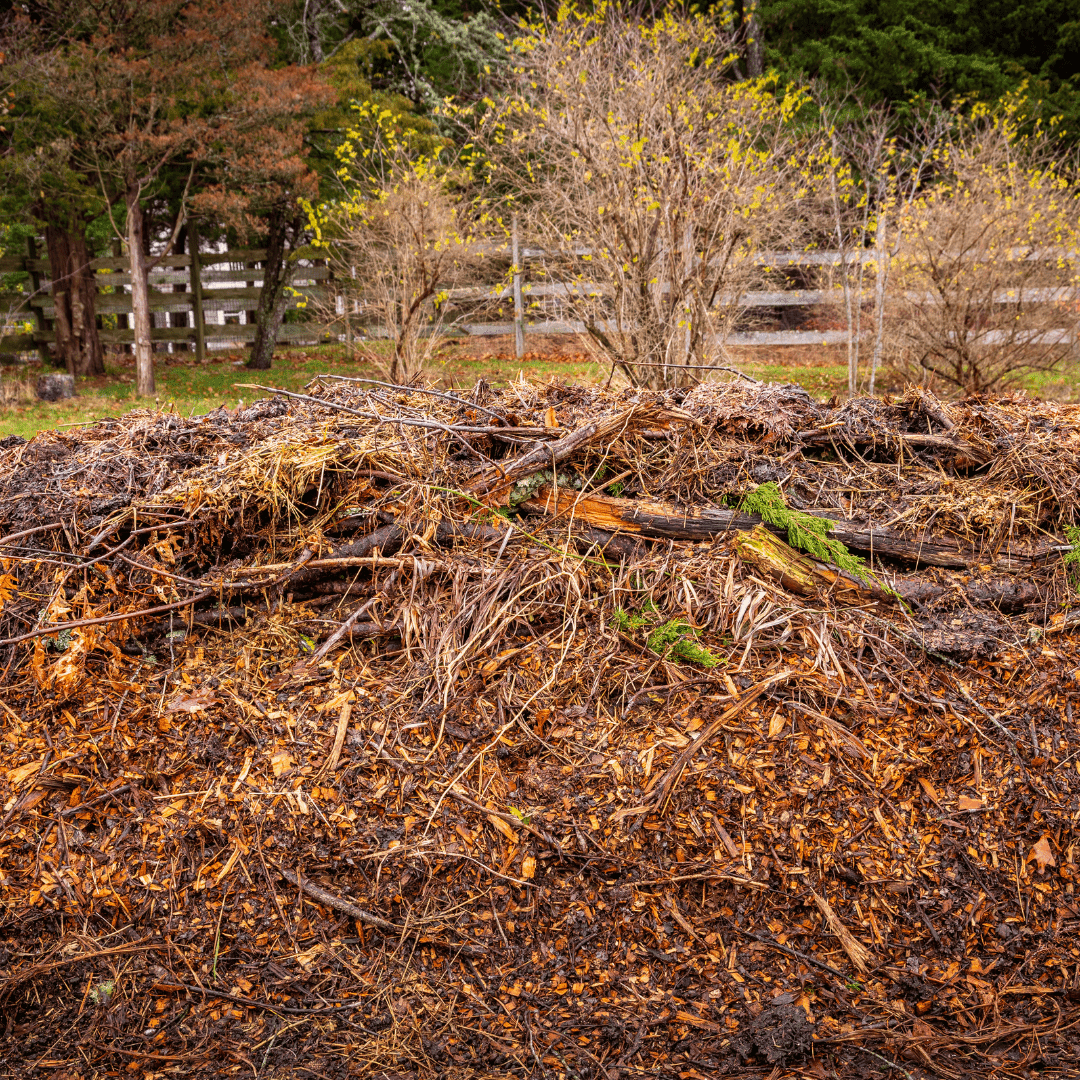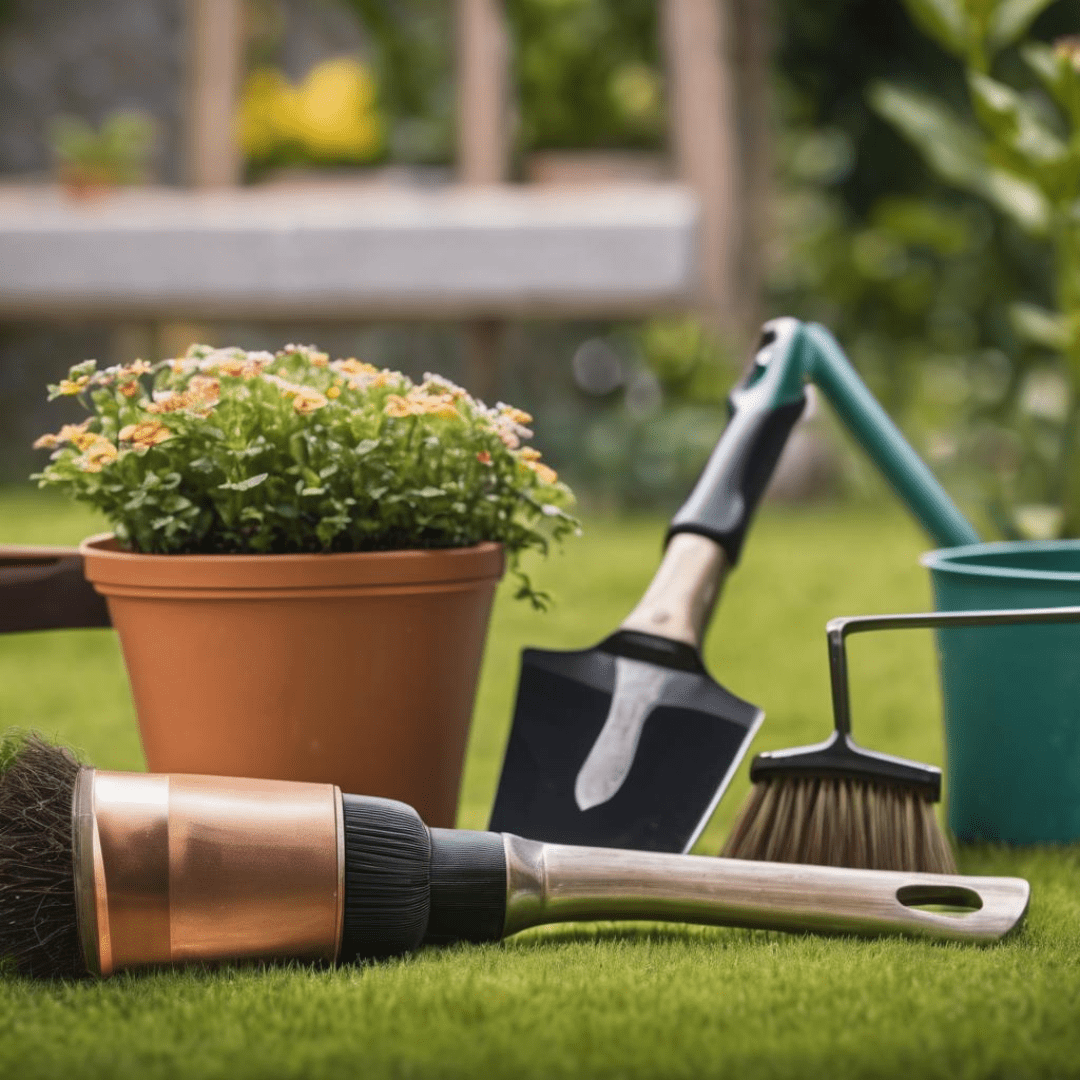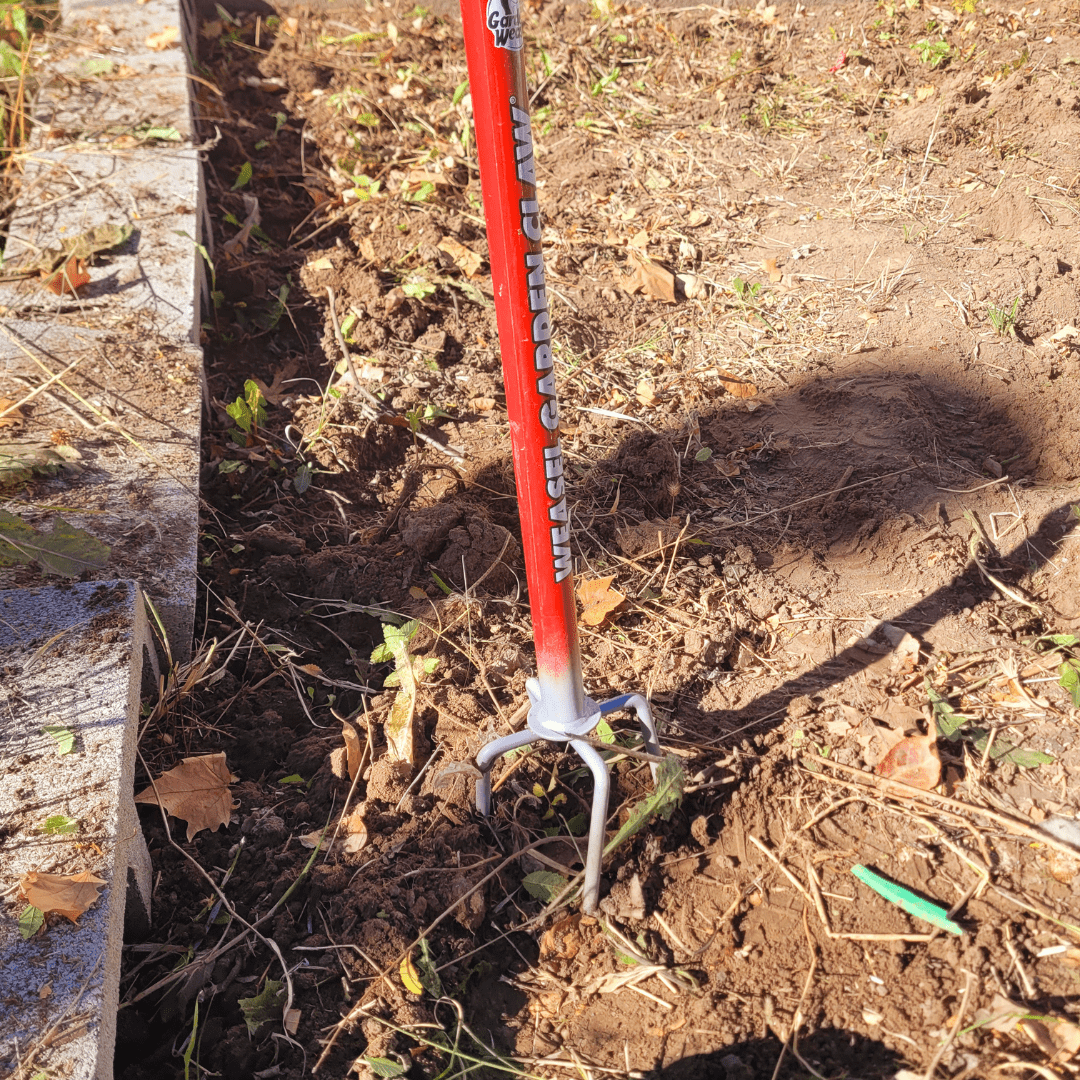Hugelkultur.
Welcome to the captivating world of Hugelkultur! Imagine lush, thriving gardens bursting with life and nourishment. That’s the promise of this ancient yet revolutionary gardening method. Let me whisk you away on a journey into the heart of Hugelkultur, where innovation meets tradition to foster vibrant soil and abundant harvests.
Imagine a gardening technique so rich in history and promise that it’s capturing the imaginations of experts and enthusiasts alike. That’s Hugelkultur for you! It’s not just a method; it’s a passion, a commitment to sustainable gardening that dates back centuries. And now, it’s experiencing a well-deserved resurgence.
In this article, I’m thrilled to guide you through the wonders of Hugelkultur. Together, we’ll explore its fascinating origins, unravel its myriad benefits, and learn how to put it into practice in your own garden. But that’s not all – we’ll also bust some common myths surrounding this groundbreaking approach.
So, grab your gardening gloves and join me on this adventure. Let’s unlock the secrets of Hugelkultur and cultivate a future of soil regeneration and resilient gardens, one plant at a time!
This is a pinnable post. Tap or hover over any image in this post to pin to your Pinterest Boards.

Introduction to Hugelkultur Gardening

A Brief Overview of Hugelkultur Gardening
An Innovative Approach to Gardening
Are you eager to explore the wonders of hugelkultur? This revolutionary gardening technique invites you to harness the power of woody debris, transforming it into lush, nutrient-rich soil beds that nurture your plants to their fullest potential. If you’re seeking an exciting alternative to conventional gardening approaches, look no further – hugelkultur could be your perfect match!
Origins and History of Hugelkultur Gardening
Picture ancient gardeners stacking logs and organic matter to craft raised beds that would sustain their plants for generations – that’s the heart of hugelkultur! This method, with its roots in Germany, has been a timeless treasure for centuries. And now, it’s experiencing a well-deserved resurgence among today’s gardeners, offering a sustainable and effective means to cultivate abundant crops.

Creating Sustainable Garden Beds
Let’s get right into the essence of Hugelkultur! Here’s how it works: We create raised beds by layering organic materials such as logs, branches, leaves, and compost. As these materials decompose gradually, they enrich the soil with vital nutrients, providing a nourishing haven for our plants to flourish.
Building Healthy Soil and Biodiversity
Let’s learn to cultivate healthy soil and promote biodiversity through Hugelkultur gardening! As passionate gardeners, we hold the key to creating vibrant ecosystems right in our own backyard.
With Hugelkultur, we actively build nutrient-rich soil by layering organic materials like logs, branches, and compost. This process not only enriches the earth with essential nutrients, but also nurtures robust plant growth. Also, Hugelkultur beds become magnets for a diverse array of beneficial insects, birds, and other wildlife, fostering a thriving ecosystem that enhances biodiversity.
By embracing this approach in our gardening endeavors, we not only feed our plants, but also contribute to the interconnected web of life in our gardens. Together, let’s harness the transformative power of Hugelkultur to cultivate healthy soil, promote biodiversity, and create vibrant, sustainable ecosystems that benefit both us and the environment.
Cultivating Thriving Gardens While Minimizing Environmental Impact
As passionate gardeners, we hold the key to crafting lush, vibrant spaces that not only enhance our surroundings, but also play a vital role in fostering a healthier planet.
With Hugelkultur, we actively construct raised beds using organic materials such as logs, branches, and compost. This enriches the soil and stimulates plant growth without resorting to synthetic fertilizers or harmful chemicals. What’s more, Hugelkultur beds excel at retaining moisture, meaning we can water less frequently and conserve precious water resources.
By embracing this eco-friendly gardening technique, we cultivate thriving gardens that flourish while minimizing our environmental impact.
Benefits of Hugelkultur Gardening
Hugelkultur gardening offers a multitude of benefits for both gardeners and the environment.
- Firstly, it creates nutrient-rich soil that promotes healthy plant growth and yields bountiful harvests.
- Secondly, Hugelkultur beds require minimal watering due to their excellent moisture retention capabilities, reducing the need for irrigation.
- Thirdly, the raised beds provide optimal drainage and aeration, preventing waterlogged soil and root rot.
- Additionally, this gardening method utilizes organic materials that would otherwise go to waste, contributing to sustainability and reducing environmental impact.
- Furthermore, these beds act as a haven for beneficial microorganisms, fungi, and insects, enhancing soil health and promoting biodiversity.
If you are limited on space for both a compost pile and a garden, this method combines the two components together creating a sustainable way to do both of these sustainable practices into one large pile!
Ultimately, Hugelkultur gardening offers a holistic approach to gardening that fosters abundance, resilience, and harmony with nature.
How Hugelkultur Improves Soil Fertility and Water Retention
Revolutionizes Soil Fertility and Water Retention
With each addition, we’re not just gardening; we’re creating self-sustaining ecosystems that nourish plants and support biodiversity. By harnessing the natural processes of decomposition and moisture absorption, this gardening method revolutionizes the way we think about soil health and water management.
By layering organic materials like logs, branches, and compost, we create a thriving ecosystem right beneath our feet. As these materials decompose, they release vital nutrients, enriching the soil and nurturing robust plant growth. Imagine the earthy scent of compost mingling with the fresh aroma of damp soil, a testament to the vibrant life teeming below the surface. What’s more, the woody debris acts as a sponge, eagerly soaking up moisture and holding onto it, even during dry spells.
With this dynamic combination of nutrient-rich soil and excellent water retention, we’ll ensure that our plants have everything they need to thrive and flourish.
Transforms Barren Landscapes Into Lush, Flourishing Gardens
As we explore this transformative technique, picture the arid expanse of barren soil, devoid of life and vitality. Now, imagine the vibrant tapestry of greenery and color that awaits as we implement Hugelkultur beds, layering organic materials like logs, branches, and compost to create fertile oases amidst the desert.
With each addition, we’re not just gardening; we’re sculpting landscapes teeming with life and abundance. Feel the sun-warmed soil beneath your fingertips and the gentle rustle of leaves as we build our Hugelkultur mounds, knowing that each layer brings us one step closer to creating a haven for plants, insects, and wildlife alike.
Together, let’s unleash the transformative potential of Hugelkultur and witness barren landscapes bloom into vibrant, thriving gardens that nourish the soul and sustain the earth.
Debunking Myths and Misconceptions

Addressing Common Doubts and Skepticism
Let’s tackle common doubts and skepticism surrounding Hugelkultur gardening head-on! As I go more into this topic, I’m eager to provide reassurance and dispel any uncertainties that may arise.
Whether you’re unsure about the decomposition process or skeptical of its effectiveness in your climate, I’m here to offer guidance and support every step of the way.
Clarifying Misconceptions About Hugelkultur
Clarifying misconceptions about Hugelkultur is essential to fully understand its potential and benefits.
Does Hugelkultur Require a Large Amount of Space?
Let’s debunk a common misconception about Hugelkultur gardening: the idea that it requires a large amount of space. With Hugelkultur, we can adapt and customize the technique to suit your space, creating thriving ecosystems that defy expectations.
Does Hugelkultur Attract Pests and Rodents?
Another misconception is that Hugelkultur beds attract pests and rodents due to the decomposing organic matter, but proper construction and maintenance can mitigate this issue.
With Hugelkultur, we’re creating vibrant ecosystems that promote biodiversity and balance. We can cultivate a thriving garden that welcomes beneficial creatures while deterring unwanted pests, ensuring a harmonious balance in our outdoor haven.
Does Hugelkultur Require Excessive Maintenance?
With proper planning and care, Hugelkultur can be surprisingly low-maintenance. Feel a sense of relief as we discuss techniques like mulching, companion planting, and occasional watering to keep your garden thriving with minimal effort.
With hugelkultur, we can cultivate a harmonious balance between nature and nurture, where maintenance becomes a labor of love rather than a burden.
Additionally, some may believe that these garden beds require excessive maintenance, but once established, they actually require minimal upkeep, making them ideal for busy gardeners.
By addressing these misconceptions and providing accurate information, I can encourage more people to explore the possibilities of Hugelkultur gardening and reap its rewards.
Practical Tips for Implementing Hugelkultur Gardening

Step-By-Step Guide to Building a Hugelkultur Bed
Building a Hugelkultur bed is a rewarding and straightforward process that anyone can undertake.
- Start by selecting a suitable location for your bed, ensuring it receives adequate sunlight and drainage.
- Next, gather your materials, including logs, branches, leaves, and compost.
- Begin by laying down a base layer of larger logs or branches, followed by a layer of smaller branches and twigs.
- Continue layering organic materials, alternating between green (nitrogen-rich) and brown (carbon-rich) materials, until the bed reaches your desired height.
- Once assembled, water the bed thoroughly to help initiate decomposition.
- Finally, cover the bed with a layer of soil and compost, and plant your desired crops or seeds.
With proper care and maintenance, your Hugelkultur bed will provide years of abundant harvests and ecological benefits.
Best Practices for Maintaining a Hugelkultur Garden
Maintaining a Hugelkultur garden involves a few simple yet important practices to ensure its continued success.
- Firstly, monitor moisture levels regularly, especially during dry spells, and water the bed as needed to keep the soil consistently moist, but not waterlogged.
- Secondly, periodically add organic matter, such as compost or mulch, to replenish nutrients and support ongoing decomposition.
- Thirdly, weed the bed regularly to prevent unwanted competition for nutrients and space.
- Fourthly, observe the health of your plants and address any issues promptly, whether it’s pests, diseases, or nutrient deficiencies.
- Lastly, embrace the natural cycle of decomposition and renewal, allowing the bed to evolve over time and supporting its resilience and biodiversity.
By following these best practices, you can maintain a thriving and productive Hugelkultur garden year after year.
Does Hugelkultur Actually Work?

Evidence-Based Analysis of Hugelkultur Gardening
An evidence-based analysis of Hugelkultur gardening reveals its remarkable efficacy and sustainability. Numerous studies and real-life examples demonstrate the positive impact of Hugelkultur on soil fertility, water retention, and plant health.
Scientific research confirms that Hugelkultur beds promote beneficial microbial activity, enhance nutrient cycling, and improve soil structure over time. Additionally, comparative studies have shown that Hugelkultur gardens require fewer water and fertilizer inputs compared to traditional gardening methods, making them a cost-effective and eco-friendly choice. By leveraging the power of natural decomposition, Hugelkultur gardening offers a scientifically validated approach to cultivating thriving gardens while minimizing environmental impact.
Comparisons of Hugelkultur Gardening with Traditional Gardening Methods
Comparing Hugelkultur gardening with traditional gardening methods highlights the unique advantages of this innovative approach. Unlike traditional gardening, which often requires frequent watering and fertilization, Hugelkultur beds excel at retaining moisture and nutrients, resulting in healthier plants with minimal inputs.
Additionally, Hugelkultur beds promote biodiversity and soil health by creating a thriving ecosystem of beneficial microorganisms and fungi. Moreover, Hugelkultur gardens are less susceptible to soil erosion and compaction, thanks to their raised beds and improved soil structure.
By embracing Hugelkultur, gardeners can enjoy higher yields, reduced maintenance, and a more sustainable approach to gardening that honors the natural processes of decomposition and regeneration.
Conclusion
As I conclude my exploration of Hugelkultur, it is evident that this age-old technique continues to inspire and revolutionize modern gardening practices. With its myriad benefits for soil fertility, water conservation, and sustainable cultivation, Hugelkultur stands as a testament to the ingenuity and resilience of nature-based solutions. Whether you are a seasoned gardener or a novice enthusiast, integrating Hugelkultur into your gardening repertoire holds the potential to transform landscapes and nurture thriving ecosystems. Embrace the principles of Hugelkultur, and embark on a journey towards greener pastures and abundant harvests.
Resources: Here are some helpful resources for further information.
- How to Build Hugelkultur Raised Garden Beds – By Sunshine Farm
- Ultimate Guide to Hugelkultur Garden Beds – By The Druids Garden
- Hugelkultur: Nature’s Raised Garden Beds – By A Way to Garden

Frequently Asked Questions
1. Can Hugelkultur be implemented in small urban gardens?
Yes, Hugelkultur can definitely be implemented in small urban gardens! This unique gardening technique involves creating raised beds using layers of organic materials like logs, branches, leaves, and compost. These materials break down over time, providing a nutrient-rich environment for plants to thrive. In an urban setting where space may be limited, this gardening method offers a practical solution for maximizing growing space and improving soil quality without needing traditional garden beds. Plus, the mounds created by this method can add visual interest to your garden while also conserving water and reducing the need for frequent watering. So go ahead and give Hugelkultur a try in your small urban garden – you’ll be amazed at the results!
2. How long does it take for a Hugelkultur bed to fully decompose and reach its peak productivity?
Typically, a Hugelkultur bed takes about 2-3 years to fully decompose and reach its peak productivity level. During this time, the logs, branches, leaves, and other organic materials in the bed break down slowly, releasing nutrients into the soil as they decay. This process creates a nutrient-rich environment that supports healthy plant growth and increases water retention in the soil. While it may seem like a long time to wait for your Hugelkultur bed to mature, the benefits of increased fertility and improved soil structure make it well worth the investment of time and effort. Plus, once your bed is fully decomposed, it can continue to provide productive yields for many years to come. So be patient and trust the process – your Hugelkultur bed will reward you with bountiful harvests in due time!
3. Are specific types of plants more suitable for Hugelkultur beds than others?
When it comes to choosing plants for Hugelkultur beds, there are certainly some types that are better suited than others. Generally, shallow-rooted plants like herbs, lettuces, and strawberries thrive in Hugelkultur beds as they don’t require deep soil to grow. On the other hand, crops with deeper root systems such as tomatoes or potatoes may struggle to reach nutrients in a Hugelkultur bed due to the thick layer of organic matter. Additionally, perennial plants like berries and fruit trees do well in these beds because they benefit from the continuous supply of nutrients provided by the decomposing wood. Ultimately, it’s important to consider the specific needs of each plant when deciding what to grow in your Hugelkultur bed.
Summary
I hope I have inspired you to try this garden method with these tips and products.
If you were encouraged by this post, I invite you to check out my FREE Printables Page for fun free printables, planners, and charts.
ENTER MY FREE Printables Page HERE
Here are some more of my gardening inspiration posts to check out!
9 Ways to Celebrate Earthing Day in Your Garden!
Gardening Indoors: Secrets of Growing Your Food Inside!
How to DIY a Milk Jug Drip Irrigation System!
Why Cedar Mulch Is The Perfect Natural Weed Barrier
Onions: How to Grow Onions for Storage
Peas: How to Grow Garden Peas for a Bumper Crop
Carrots: How to Grow Carrots for a Bountiful Harvest
Prep Your Garden for Spring Planting with These Expert Tips!
How to Grow a Prepper Garden to Survive and Thrive
The Best Garden Tools You Need for a Productive Season
Fastest Growing Vegetables for Your Survival Garden
How to Grow Marigolds As Pest Control In Your Vegetable Garden
Must-Have Tools for a Successful Balcony Vegetable Garden
How to Effectively Combat Powdery Mildew in Your Garden
The Best Tips for Organic Gardening
How to Release Ladybugs In Your Garden for Organic Pest Control
The Best Garden Snail Control Strategies
The Best Spring Vegetables to Grow in Your Garden
Seed Starter Mix: How To Make Your Organic Seed Starter Mix At Home
How to Grow a Productive Canning Garden
How to Plant and Grow a Salsa Garden
Easiest Heirloom Vegetable Seeds to Grow Now
How to Use the Hand Twist Claw Tiller: Tackling Tough Soil
More Fun Gardening Posts to Check Out!
Planning Your Garden: How to Plan a Vegetable Garden: Expert Green Thumb Tips!
Winterizing the Garden: How to Winterize Your Vegetable Garden: Step-by-Step Checklist
Mulching the Garden: How to Make Leaf Litter Mulch
Grow a Pumpkin Patch: How to Grow a Pumpkin Patch in Your Backyard
How to Grow a Fall Garden: 9 Best Fall Crops
Clever Ways to Incorporate Indoor Composting into Your Home
How to Start Composting for the Garden: A Step-by-Step Guide
The Ultimate Guide to Composting in Your Suburban Backyard
Why I Built A Survival Garden in My Backyard
16 Best Medicinal Herbs to Grow in Your Garden Now
Blessings,
The Off Grid Barefoot Girl







